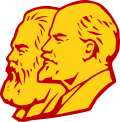Civilian control of the military in communist states have differed from country to country. There are typically three models of civilian control of the military: party-run, state-run, and hybrid. In all three models, the communist party has an internal organisation in the military.
